Indonesia has the second highest number of child marriage in ASEAN, and one among the top ten at global level. The Central Bureau of Statistics (CBS) reported in 2019 that one out of nine Indonesian female aged 20-24 were married when they were less than 18 years old.
SETARA Brings New Era of Sexuality and Reproductive Health Education
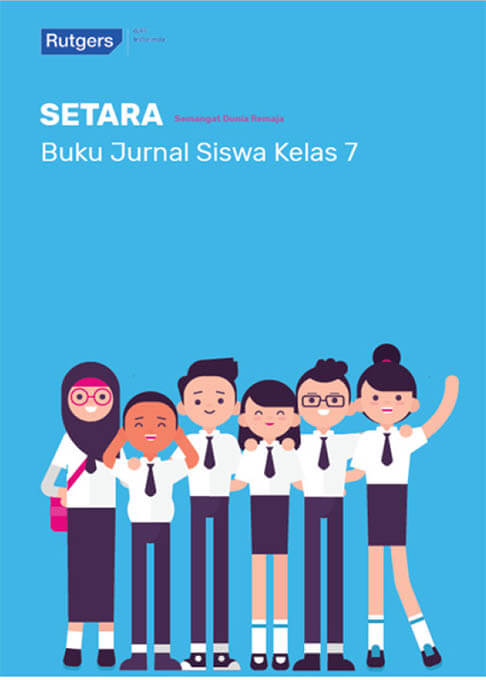
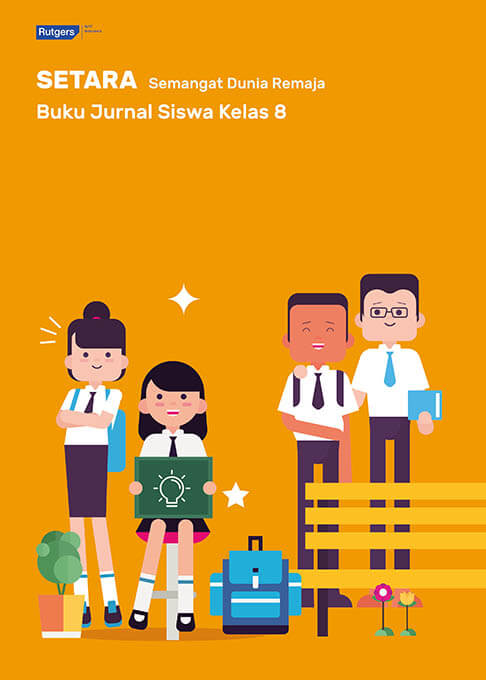
Reproductive Health Education in the modern era should accommodate puberty issues to make it easy to understand and in order to encourage discussion among the education actors. That’s how teenagers read information and apply it in their lives these days, and we came to understand that the old-fashioned, intimidating way of education is no longer relevant.
Reproductive health education model by means of threatening and scaring teenagers are not effective to keep teenagers from committing risky sexual behavior. On the contrary, incomprehensive information has increased the numbers of child marriage, abortion and sexual violence.
63%
Other data from WHO on the sexuality and reproductive health profile for 2021 indicated 16.3% of Indonesian females are married before they reach 18 years of age.
The top five provinces with the highest numbers of child marriage are West Sulawesi (34.22 percent), South Kalimantan (33.68 percent), Central Kalimantan (33.56 percent), West Kalimantan (32.21 percent) and Central Sulawesi (31.91 percent).
Puberty with lack of adequate awareness regarding reproductive health might also increase the chance of unwanted pregnancy.
Each year, an estimated of 22 million teenagers got pregnant, and in turn increasing the risk of fatality for new moms – or more accurately, young females – aged 15-19 years. Limited information has also been suspected to be the root cause of 35 percent of HIV/AIDS cases on teenagers, plus 2 million of abortion cases annually.
Aged
15 - 19 years
35% Cases of
HIV/AIDS
2 Million Cases of
Abortion
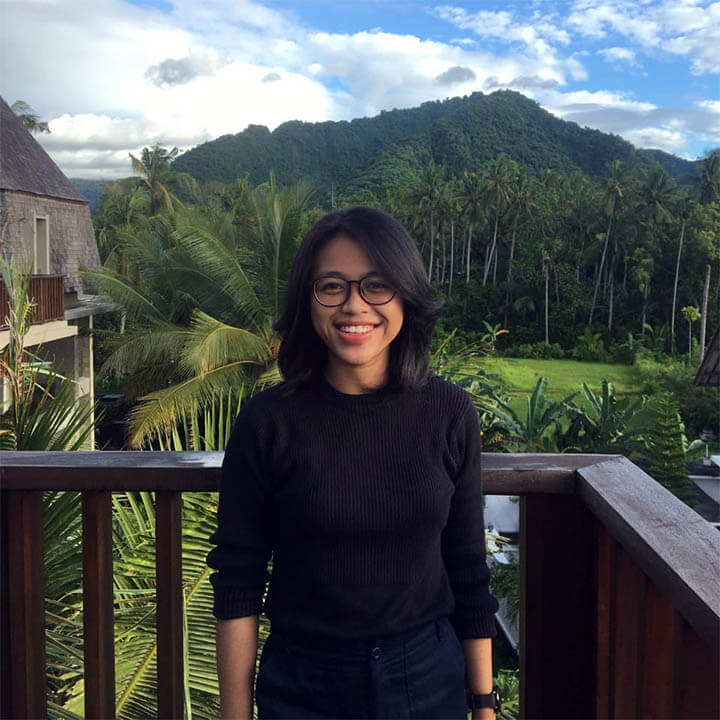
“Until now, our sexuality and reproductive health education was conducted by sharing information to frighten them, and focused on terrible consequences (of risky sexual behavior). ‘If you do this, you’re doomed.’ We only discuss the biological aspect of it,” revealed Ni Luh Eka Purni Astiti, Executive Director of Association of Indonesian Family Planning (PKBI) Bali branch when we asked her to describe briefly about CSE.
What she meant by biological aspects are information such as how HIV is transmitted, or how pregnancy is conceived. According to Eka, in Bali, a relatively urban area, the CSE is complicated.
Don’t even mention about the taboo, because this issue is common to any region in Indonesia, particularly in the rural ones. CSE in Indonesia hasn’t been included in school curricula, making it difficult for teachers and facilitators to deliver education materials.
Brief socialization completed in merely days is not adequate to deliver CSE materials to teenagers. “We have to think hard to deliver Comprehensive Sexuality Education (CSE). Schools’ principals have their commitment to allocate time, but there are other lessons in the curriculum that need to be taught,” Eka continued.
Then, we invited Ayi Erdian from Indonesian Red Cross (PMI) in Jakarta to help us discuss the issue. Like Eka, Ayi is a CSE peer educator for teenagers, specifically in several schools in East Jakarta area. Their task is to deliver CSE to school teachers and students.
For Ayi, what Eka said reflects the CSE situation in Jakarta. Apparently, the information gained by teenagers in the capital is nothing better than those in Bali. Bali has even preceded Jakarta in terms of HIV prevention and treatment program, as looking back, the first HIV cases in Indonesia originated from there.
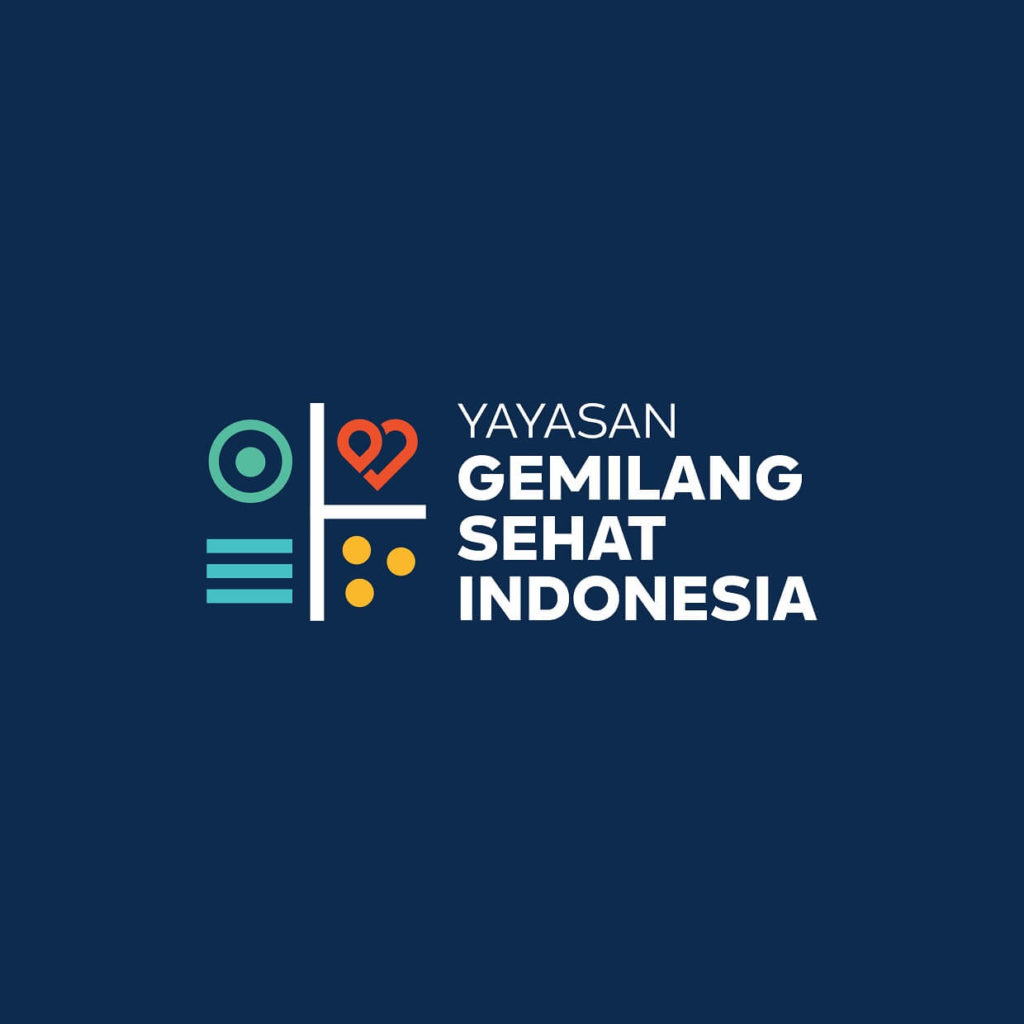
“There are even gaps on CSE information among different schools in the same sub-district. It depends on their environment. The fact that the schools are located in Jakarta doesn’t make much difference. A lot of areas in Jakarta are still marginalized,” said Ayi.
Changing The Story
From Ground Zero
The gaps and lack of information on CSE in Indonesia are rooted in the taboo shrouding the issue in this country. For too long – generations after generations, we have been concealing information about sexuality that it becomes foreign to our daily life.
A lot of people – especially boomers, are reluctant to discuss sexuality and reproductive issues since they think it’s dirty and inappropriate. On the other hand, their children are very curios, while the internet is much more widespread and easily accessible.

“The issue is getting worse. There are a lot of incidents of sexual violence in educational institutions,” Ely Sawitri, Program Monitoring and Evaluation officer in Rutgers Indonesia added. Rutgers is an organization working to address Sexuality and Reproduction Health Rights and Issues (SRHR), as well as prevention of Gender Based and Sexual Violence (GBSV).
Approximately in 2012, Rutgers started to realize that CSE system in Indonesia is in need of a fundamental change. Rutgers then launched a reproductive health education module called “SETARA”, an acronym of Semangat Dunia Remaja (The Ardor of Adolescence). It took 15 years for Rutgers to develop the module to make it relevant with the dynamic of the youth’s need.

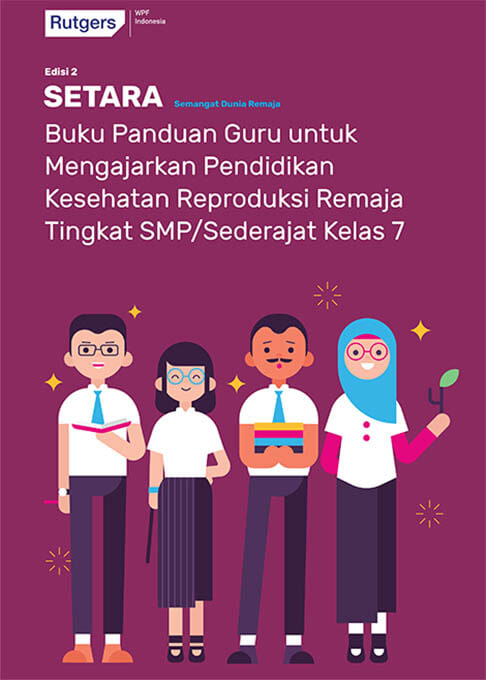
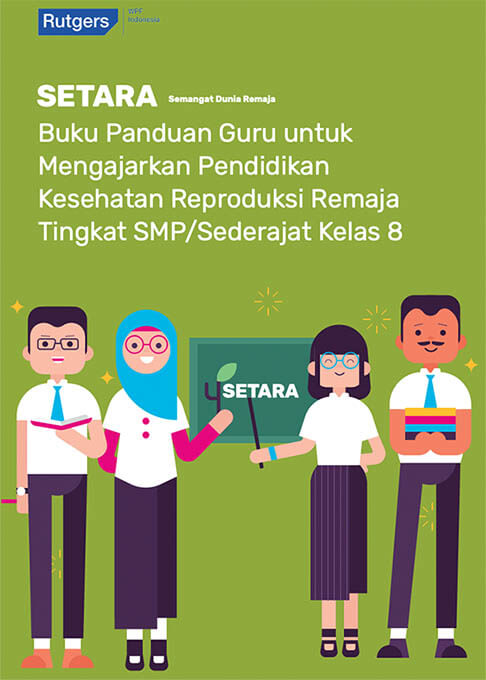





SETARA, was the seed of growth for positive CSE without morality taboo. It also triggered movement for legal protection and prevention of child marriages in several regions in Indonesia. It came in the form of a reproductive health modules that served as a guide post for a clueless CSE at the time.
You might be wondering, why did it take so long, and was the result worth it?
It’s not just another manual book, Rutgers adopted it from Rutgers Netherland’s CSE which comply to International Technical Guidelines on Sexuality Education. ITGSE is an international guideline standardized by UNESCO.
The first edition was issued in 2012 and contained various topics related to reproductive health, management of emotion, relation and confidence for teenagers. Between 2017 and 2018 the module was revised, some of the contents were adjusted with the development and the “culture” in Indonesia.
There are two versions of SETARA education modules: for teachers and for students. The different versions allow teachers and students to learn about reproductive health issues through their own perspectives. SETARA was the pioneer of CSE in Indonesia.

“On the other hand, the parents also need to be educated to fill the gap of information. The school introduced SETARA during orientation period or when distributing learning reports,” Ely continued.
But the road to changes is far from smooth. Rutgers faced many hurdles and obstacles during the implementation phase. Ely described how one of region covered any mention of genital organ such as penis and vagina with adhesive tape.
There was rejection regarding certain topics such as relationship recognition, gender spectrum and illustrations depicting changes on a pubescent body.
The same issues were shared with other education spaces Rutgers provided, such as in the Power to You(th) program. The program focuses more on empowerment of young females aged 12-24 years at the community level. They were educated about Sexuality and Reproductive Rights (SRHR), child marriages, unwanted pregnancy, female circumcision (or female genital mutilation), contraception rights and violence against women.

“Changes can only be achieved when every actor is involved, from the smallest level in the family, to villages, officials, to the government. Creating synergy was the challenge,” explained M. Rey Dwi Pangestu, program manager of Power to You(th).
Rutgers implemented Power to You(th) in three pilot regions, West Java, East Java and West Nusa Tenggara. Those regions were selected because they have the driving factors for child marriages. Poverty has been the main reason girls were trapped in child marriages.
Furthermore, the community in East Java is highly religious, and they often misinterpret the norms for child marriages. They normalize early marriages to prevent underage children from committing adultery. Similar to East Java, the Sasak tribe in Lombok still perform the merariq kodeq tradition where a man is allowed to kidnap a girl to make her his bride.
But there is a misperception about the tradition. Due to ignorance, or by intention, merariq is often used as a customary excuse to marry underage girls. It’s basically a violation to the tradition because originally, to perform merarig kodeq, there should be an agreement between the groom and the bride, and it should be done under supervision of the customary leaders.
In the merariq tradition, there is a procession called memaling or selarian. Instead of “kidnapping” or “eloping”, memaling actually means hiding, and it was done after an agreement between an adult bride and her parents. In this procession, the groom is required to bring his female family members to accompany his future bride.
In terms of age requirements, the groom must own 25 buffaloes or cows, while the bride should be able to spin cotton into threads, and weave the threads to make as much as 144 pieces of fabric called songket, and sell them. Based on this calculation, a woman can only perform merariq when she’s 22 years or older.
Slowly but Sure:
The Changes that
Empower Youth
The adolescence is a crucial phase when a child turns into an adult. A lot of changes are occurring during this phase, including physical, mental, emotional, social and cognitive maturity. At this point, people begin to search for their identity as well as information about sexuality.

“We face a different culture and challenges at present than in the past. If we don’t give children the right foundation, it will be harmful to them because they’re bombarded with excessive information, and the parents can’t keep up,” said Siswanto Agus Wilopo, a professor in the Faculty of Medicine, Public Health and Nursing (FKKMK) at Universitas Gadjah Mada (UGM).
Siswanto claimed that 75 percent of any unofficial information on sexuality obtained by teenagers are not credible. The youth need comprehensive education as a guideline in their decision-making process regarding sexuality.
Ideally, CSE begins at the primary school level – with adjustments to the curriculum at their age levels – because reproductive health issues start to appear in early adolescence. Males start to undergo bodily changes, while females also start to have menstruation.
Without adequate CSE, teenagers – children who just come of age and starting to turn into young adults – are confused and might be misled by information. Adoption of SETARA as CSE module at middle and higher school levels has proven to prevent such incidents.
The condition is reflected on the survey designed to measure changes of youth perspective following SETARA implementation, called Global Early Adolescent Study (GEAS). GEAS was initially launched in 2018 and was re-evaluated in 2021.
Data for GEAS was collected from Denpasar, Semarang and Bandar Lampung – another sample of story of changes. These three regions were selected because they have different cultural and religious background.
Bandar Lampung, located in Sumatera, represent a more conservative Islam environment, while Hindu that’s considered more opened is represented by Denpasar, Bali. Both were compared with Semarang, a relatively generic area in Java in terms of globalization of print, electronic and social media, as well as tourism and contacts with non-indigenous culture.

“The most obvious change seen based on GEAS is, the more positive youth perspective regarding CSE literacy and communication. They’re more willing and open to talk about pregnancy or discuss HIV,” revealed Anggriyani Wahyu Pinandari, coordinator of GEAS as well as a researcher from UGM Reproductive Health Center.
Teenagers also scored more in terms of their views about bodily changes and puberty, romantic and sexual behavior, and suppressing bullying. In short, SETARA is a breakthrough against sexuality taboo among teenagers.
To quote Eka’s statement, a real example of the story of changes in Bali is reflected in the youth’s awareness to access the Counseling on Health Care Services for Youth (PKPR). The PKPR program is conducted in community health centers with the aim to provide counseling for various health issues for youth.
Prior to SETARA implementation, no teenager came to PKPR on their own initiative. Registers in several community health centers in Denpasar showed zero access to the service. They only utilize the service when they come to the center for other treatment, and were offered to use it.

“After we promoted SETARA, we can say that there’s a 100 percent increase,” said Eka.
Now they’re not only familiar with the biological aspects (of sexuality and reproductive health), such as transmission of HIV or conception. They understand reproductive health in a wider spectrum, such as sexuality diversity, healthy relationships, understanding emotion and mental health.
Along with SETARA, other programs at the community levels such as Power to You(th) have also contributed in driving changes – although not specifically measured such as done by GEAS for SETARA.
Rey said that the female teenagers have transformed themselves to be the frontliners of changes, for example when they find child marriage cases in their environment. They urge other share-holders in the upper levels to resist those practices.

“They’re more aware when their friends drop out of school because they were force to marry. They know they have to stop it, so that they report it to SETARA teachers or to their peer educators,” Rey continued.
The simulation continued with negotiation between Women and Children Services Unit at the police, the village chief, customary leaders and parents of the child marriage victim. At schools level, teachers in Lombok Barat have taken the initiative to provide menstrual pads in school as a form of fulfillment of reproductive health rights for young females.
What changes took place at the policy level?
The story of changes is not shared by all teenagers in Indonesia, because SETARA program hasn’t been adopted in the entire country. It hasn’t been included in the curriculum either, so that teachers need to sneak time in between lessons to deliver the material.
We then asked Siswanto about the opportunity for a wider change at the national level. He said that results of GEAS were used to advocate the program at five different ministries, particularly the Ministry of Health, and Ministry of Education, Culture, Research and Technology in order to produce a national CSE module.
The plan is to use SETARA as a reference for the national CSE module, then the module will be distributed to more than 200 regencies/municipalities. The government will also provide CSE training to 5,000 teachers in phases by 2025.

“So GEAS results have provided impact for the policy makers, we just need patience and evaluation. In the future we can expect more students and more schools to receive comprehensive CSE,” said Siswanto hopefully.
Until that time comes, we can start the story of changes from our smallest environment: our families and our schools. And Rutgers have begun the story with SETARA. Because our reluctance to discuss sexuality is like letting our youth walking through a dark tunnel.
